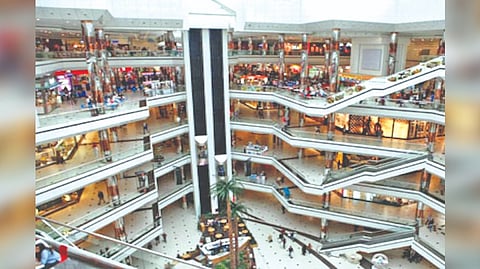

MUMBAI: The stock of Grade A* shopping malls in the top seven cities of India (Delhi, Mumbai, Pune, Bengaluru, Kolkata, Chennai and Hyderabad) is at 90.6 million sq ft in H1 2022.
Over 50 per cent of the mall stock is in Delhi NCR (29 million sq. ft) and Mumbai (19 million sq. ft), respectively. Mall supply of around 1.3 million sq ft is recorded in H1 2022, with additions in Pune, Bengaluru, Mumbai and Hyderabad. Institutional investors and reputed developers are also increasing their focus on Tier II and III cities, as per JLL’s report titled ‘Innovate. Differentiate. Accelerate. India’s retail sector in 2022 and beyond.’
“The retail sector in the country was under duress for a long time due to the pandemic. However, since March 2022, there has been an equally swift recovery owing to the favorable demographics, rapid urbanization, and rising consumption. All these factors have together created an environment that has boosted the confidence of the sector. With growth potential in the retail sector, investors expect healthy returns in the long run. Investors are looking for quality Grade A assets by established developers and having a marginal vacancy,” said Rahul Arora, head, Office Leasing Advisory and Retail Business, India, JLL.
With the retail market rebounding on the back of strong leasing activity by international and national retailers, the vacancy in superior Grade A assets has been declining constantly. Investors prefer leased-based assets over strata-sold assets to ensure fair market rentals and timely returns. Investment in retail assets is not just limited to metros, as significant activities have been recorded in Tier II and Tier III cities as well, he added.
“The Tier II and III cities are witnessing a considerable supply of quality retail assets by established developers. Additionally, investments by these big institutional players help developers to exit the project partially or fully, reduce their debt and focus on other developments,” Arora said.
Institutional investment in the retail sector has been picking up, with over $ 862 million recorded from 2021 to date (excluding portfolio deals).
It is seen that superior-grade malls are preferred by both consumers and retailers. Therefore, there is a widening gap between vacancies in superior and average malls, leading to vacancy polarisation.
“More than 70 shopping malls with a total retail space of 31.02 million sq ft are expected to become operational during H2 2022-2025 across the top seven cities of India. Delhi NCR and Chennai will be the major contributors with a 48 per cent share in the upcoming supply. Bengaluru and Hyderabad also have considerable retail supply coming up with a combined share of 30 per cent of total supply till 2025. It is encouraging to note that led by a buoyant demand, a robust supply pipeline by established developers is expected to get operational by 2025,” said Samantak Das, Chief Economist and Head of Research and REIS, India, JLL.
*Malls defined on the basis of vacancy, tenant mix, quality of mall management, ownership pattern (strata vs leased), amenities and mall area
Visit news.dtnext.in to explore our interactive epaper!
Download the DT Next app for more exciting features!
Click here for iOS
Click here for Android